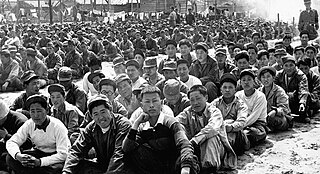 W
WA prisoner-of-war camp is a site for the containment of enemy combatants captured by a belligerent power in time of war.
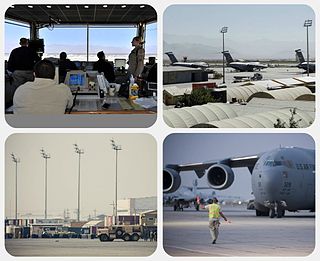 W
WBagram Airfield-BAF also known as Bagram Air Base is the largest U.S. military base in Afghanistan. It is located next to the ancient city of Bagram, 11 kilometres (6.8 mi) southeast of Charikar in the Parwan Province of Afghanistan. It has a dual runway capable of handling large military aircraft, including the Lockheed Martin C-5 Galaxy and Antonov An-225. Bagram Air Base is occupied by the Afghan Armed Forces and the US-led Resolute Support Mission.
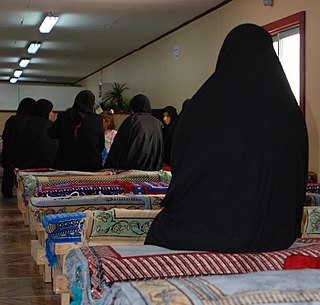 W
WCamp Bucca was a Forward Operating Base that housed a theater internment facility maintained by the United States military in the vicinity of Umm Qasr, Iraq. After being taken over by the U.S. military in April 2003, it was renamed after Ronald Bucca, a NYC fire marshal who died in the 11 September 2001 attacks. The site where Camp Bucca was built had earlier housed the tallest structure in Iraq, a 492-meter-high TV mast.
 W
WCamps for Russian prisoners and internees in Poland that existed during 1919–1924 housed two main categories of detainees: the personnel of the Imperial Russian Army and civilians, captured by Germany during World War I and left on Polish territory after the end of the war; and the Soviet military personnel captured during the Polish–Soviet War, the vast majority of them captured as a result of the battles of 1920. Locations of the camps included Strzałkowo, Pikulice, Wadowice, and Tuchola.
 W
WChí Hòa Prison is a functioning Vietnamese prison located in Ho Chi Minh City, Vietnam. The prison is an octagonal building on a 7-hectare site consisting of detention rooms, jail cells, prison walls, watchtowers, facilities and prisoner's farmlands. The prison is one of 12 national prisons in Vietnam. Originally built by the French Indochina colonial government in 1943 to replace the Saigon Grand Prison, the prison was extensively used by all succeeding governments of Vietnam. Due to its complex and effective architecture, the prison is considered one of the highest security prisons in Vietnam as there were only two successful prison breaks in its history.
 W
WCowra Prisoner of War Camp Site is a heritage-listed former prisoner-of-war camp at Evans Street, Cowra, Cowra Shire, New South Wales, Australia. The camp was built from 1941 to 1944. It was the location of the infamous Cowra breakout in 1944. The property is owned by the Cowra Shire Council. It was added to the New South Wales State Heritage Register on 2 April 1999.
 W
WFinnish Civil War prison camps were operated by the White side of the 1918 Finnish Civil War. They were composed of 13 main camps, mostly active from the April–May 1918, and more than 60 smaller POW camps at the final period of the war. Number of captured Red Guard members and associates was approximately 80,000 including 4,700 women and 1,500 children. A total of 12,000–14,000 prisoners died in captivity. Camps and their hopeless conditions effected in the minds of many people much deeper than the bloody war itself, although the camps were totally ignored for decades by the White interpretation of the Civil War history.
 W
WGeoje-do POW camp was a prisoner of war camp located on Geoje island at the southernmost part of Gyeongsangnam-do, South Korea. It is considered the largest of the UNC established camps.
 W
WGivet is a commune in the Ardennes department in northern France very close to the Belgian border. It lies on the river Meuse where Emperor Charles V built the fortress of Charlemont. It borders the French municipalities of Fromelennes to the east and Rancennes to the south and Foisches to the southeast.
The Guantanamo Bay detention camp is a United States military prison located within Guantanamo Bay Naval Base, also referred to as Guantánamo, GTMO, and "Gitmo", which is on the coast of Guantánamo Bay in Cuba. Indefinite detention without trial and torture have led the operations of this camp to be considered a major breach of human rights by Amnesty International and a violation of Due Process Clause of the Fifth and Fourteenth amendments of the United States Constitution.
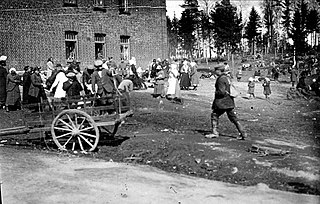 W
WHennala camp was a concentration camp operating from the beginning of May 1918 to 15 September 1918 in the Hennala Garrison in Lahti, Finland. It was set up for the Reds captured by the White Army after the Finnish Civil War Battle of Lahti.
 W
WDuring the American Civil War, a parole camp was a place where Union or Confederate soldiers on parole could be kept by their own side, in a non-combat role. They could be restored to a combat role if some prisoners of war were traded to the other side. This would enable them to be returned to a combat role as an exchange for the newly freed prisoners of war. Conditions in the camps were unpleasant; the parolees refused to do guard duty or routine work, claiming that would violate their parole. Many escaped to go home.
 W
WSugar Houses in New York City were used as prisons by occupying British forces during the American Revolutionary War. Out of 2,600 prisoners of war captured during the Battle of Fort Washington in November 1776, 1,900 would die in the following months at makeshift prisons throughout the city. At least 17,500 are estimated to have perished under substandard conditions of such sugar houses and British prison ships over the course of the war, more than double the number of killed from battle.
 W
WThe Tammisaari camp was a concentration camp and prison in Dragsvik, Ekenäs in Finland. It was set for the Reds captured by the Whites in the 1918 Finnish Civil War. The concentration camp operated from May 1918 to 15 September 1918 when the majority of the captured Reds were released on parole. Tammisaari camp was then turned into a forced labour camp for convicted Reds and later in the early 1920s into a facility for political prisoners. Tammisaari camp was known as the most notorious of all Finnish Civil War prison camps. Between May and September 1918 nearly 3,000 of the 8,700 prisoners died of executions, disease or malnutrition.
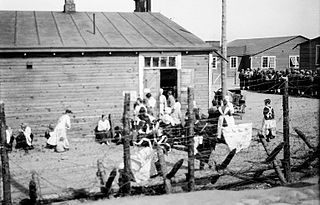 W
WTampere camp was a concentration camp operating from 6 April 1918 to 15 September 1918 in the Kaleva district of Tampere, Finland. It was set up for the Reds captured by the White Army after the Finnish Civil War Battle of Tampere.